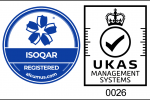Proper ventilation is essential in any painting environment to ensure safety, improve air quality, and maintain efficiency. Without an effective extraction system, paint fumes and airborne particles can pose serious health risks, create fire hazards, and lead to poor-quality finishes.
Choosing the right extractor fan is crucial for maintaining a safe workspace. Spray booth extractor fans and paint extractor fans serve different purposes, and selecting the wrong one can impact performance and compliance with safety regulations.
This article explains the key differences between these two types of extractor fans, helping you to determine the best option for your needs, whether you run a professional spray booth or work on smaller-scale painting projects.
What is a Spray Booth Extractor Fan?
Definition and Purpose
A spray booth extractor fan is designed for enclosed spray booths to remove hazardous fumes, overspray, and airborne particles that are generated during the spray-painting process. It ensures a controlled airflow that directs contaminants away from the workspace, maintaining a safe and clean environment.
Spray booths are commonly used in industries such as automotive refinishing, manufacturing, and industrial coatings, where precise application and strict safety standards are required. Without proper extraction, toxic fumes and flammable vapours can accumulate, posing serious health and fire risks.

How It Works
A spray booth extractor fan operates by creating a steady airflow that pulls contaminated air out of the booth while introducing fresh air to maintain a balanced pressure. The extracted air passes through filtration systems, which trap overspray particles and harmful substances before the air is either recirculated or vented outside.
Modern systems often include multi-stage filtration, incorporating pre-filters, HEPA filters, and activated carbon filters into a spray booth filter system, to capture paint particles and neutralise harmful chemicals. This process not only protects workers but also helps businesses to comply with environmental and safety regulations.
Key Features
- High Airflow Capacity: Designed to handle the volume of enclosed spray booths efficiently, ensuring proper ventilation.
- Regulatory Compliance: Meets health and safety standards, such as HSE guidelines in the UK, ensuring legal operation.
- Integrated Filtration Systems: Advanced filters remove contaminants, preventing pollution and protecting workers.
Example
A professional auto-body repair shop uses a spray booth extractor fan to maintain air quality while painting vehicles. The system prevents paint particles from settling on surfaces, reduces worker exposure to harmful fumes, and ensures compliance with the environmental regulations.
What is a Paint Extractor Fan?

Definition and Purpose
A paint extractor fan is a general-purpose ventilation system designed to remove paint fumes from open areas or small-scale painting setups. Unlike spray booth extractor fans, which are built for enclosed spaces with strict air control, paint extractor fans are typically used in workshops, garages, and temporary painting stations where full-scale spray booths are not feasible.
These fans help reduce exposure to harmful fumes and improve air circulation, making them a practical choice for DIY painters, furniture refinishers, and small business owners. However, they do not offer the same level of efficiency and filtration as spray booth extractor fans.
How It Works
A paint extractor fan works by creating negative air pressure, drawing paint fumes and airborne particles away from the workspace or paint booth. The extracted air is usually vented outdoors through ducting pipes or through an open window. Unlike spray booth extractor fans, most paint extraction units do not include multi-stage filtration, which means that contaminants are expelled directly into the environment rather than being trapped and neutralised.
For smaller workshops, an extractor fan can be combined with portable filters or external exhaust systems to improve the air quality. However, proper setup is essential to prevent overspray from settling on surfaces and to ensure effective fume extraction.
Key Features
- Lower Airflow Capacity: Suitable for smaller workspaces but less effective for high-volume spraying.
- Common in DIY and Small Workshops: Frequently used for furniture painting, craft projects, and low-scale automotive work.
- Limited Filtration: Often requires external venting rather than built-in filtration to remove fumes.
Example
A home-based woodworking shop uses a paint extractor fan to remove fumes from spray painting furniture. While it helps improve ventilation, the setup requires very careful positioning near an open window to ensure the fumes are safely expelled outside.
Key Differences Between Spray Booth Extractor Fans and Paint Extractor Fans

Airflow & Efficiency
Spray booth extractor fans are designed to handle large volumes of air, ensuring an efficient removal of hazardous fumes and overspray in enclosed environments. They create a controlled airflow that directs contaminants away from the workspace while maintaining proper air pressure inside the booth. These systems are engineered for continuous operation in high-production settings, such as automotive refinishing or industrial coating applications.
In contrast, paint extractor fans operate at a lower airflow capacity and are intended for smaller, open workspaces. They do help to disperse fumes, but aren’t as effective at controlling the overspray or maintaining consistent airflow. While suitable for light-duty use, they lack the power needed for intensive spray-painting operations.
Filtration System
One of the major distinctions is the level of filtration. Spray booth extractor fans typically include multi-stage filtration, incorporating pre-filters, HEPA filters, and activated carbon filters. These layers trap overspray, capture fine particulates, and neutralise harmful chemicals before releasing the air back into the environment or venting it safely outside.
Paint extractor fans, on the other hand, generally do not include built-in filtration. They rely on direct venting, which means that fumes and airborne particles are expelled outdoors without being filtered. This can lead to environmental concerns, and it may not be suitable for all locations, particularly in urban areas where strict emissions regulations apply.
Compliance & Regulations
Spray booth extractor fans must comply with the health and safety regulations, such as HSE guidelines in the UK, which mandate proper fume extraction, fire safety measures, and air quality controls. Businesses that fail to meet these requirements risk fines, legal action, or operational shutdowns.
As paint extractor fans are more basic in the design, they may not be subject to the same strict regulations. However, users must still ensure adequate ventilation and consider the local environmental laws regarding the release of fumes.
Use Cases
Spray Booth Extractor Fans: Used in auto-body shops, industrial manufacturing, and high-volume spray painting operations where controlled airflow and strict safety standards are essential.
Paint Extractor Fans: Suitable for DIY projects, small-scale workshops, and occasional painting needs, such as accessory parts, where a full spray booth setup is not necessary.
Installation & Cost
Spray booth extractor fans require professional installation, including ducting, filtration systems, fume exhaust fans and electrical connections. They represent a higher upfront investment, but provide long-term safety and compliance benefits. Routine maintenance is necessary to keep filters clean and ensure an optimal performance.
Paint extractor fans are more affordable and easier to install, often requiring just a basic mounting setup and an exhaust outlet. Their portability makes them a flexible option for temporary or low-frequency painting tasks, but they lack the durability and efficiency of dedicated spray booth systems.
Which One Should You Choose?
For Professional Use
A spray booth extractor fan is the best choice for businesses involved in large-scale or frequent spray-painting operations. Auto-body repair shops, industrial manufacturers, and commercial paint facilities require high-powered ventilation to maintain air quality, filter exhaust air, meet legal requirements, and ensure worker safety.
Spray booth extractor fans not only remove harmful fumes and overspray but also help achieve consistent paint finishes by maintaining a controlled airflow. Their built-in filtration systems ensure compliance with the UK Health and Safety Executive (HSE) regulations, reducing the risk of fines or operational shutdowns. Investing in a high-quality spray booth ventilation system can also improve productivity, by creating a safer and more efficient working environment.
For Home & Small Workshops
For occasional or small-scale painting projects, a paint extractor fan may be sufficient. These fans are ideal for DIYers, furniture refinishers, and hobbyists who need to vent fumes from garages, sheds, or temporary painting spaces.
However, proper ventilation is essential. A basic paint extractor fan without filtration may still allow harmful particles to enter the surrounding environment. To help mitigate risks it’s important to position the fan correctly, use an exhaust duct, and wear protective gear. If painting indoors, additional air purification methods such as carbon filters or air scrubbers may be necessary.
Safety Considerations
Especially with the spraying of flammable liquids, spray booth extractor fans significantly reduce fire hazards by safely handling flammable vapours and ensuring controlled airflow. They also help businesses to comply with fire safety regulations, reducing the risk of explosions caused by paint mist buildup.
On the other hand, paint extractor fans may require extra precautions. As they do not always include proper filtration, fumes can accumulate in enclosed spaces if not vented correctly. Users should always direct extracted air outdoors and avoid using them in poorly ventilated areas.
Cost vs. Long-Term Investment
While spray booth extractor fans have higher upfront costs, they provide long-term benefits in terms of air quality, compliance, and durability. Regular maintenance, such as filter replacements and duct cleaning, ensures that they remain effective over time.
Paint extractor fans are more affordable and accessible but may not offer the same level of efficiency. For those using them regularly, upgrading to a proper spray booth system may be a more practical investment in the long run.
Final Thoughts
Choosing the right air filter extractor fan depends on the scale of your painting projects, workspace conditions, and safety requirements. Spray booth extractor fans are essential for businesses and industrial applications, providing high airflow, multi-stage filtration, and compliance with the safety regulations. They ensure a controlled environment for consistent paint finishes and long-term air quality management.
For DIYers and small-scale painters, a paint extractor fan can be a practical option, provided it is correctly vented. Proper ventilation is key to reducing health risks and maintaining a safe workspace. Assess your painting setup carefully and invest in the right extraction system for optimal safety and efficiency.































![Unova-Logo-2022_White_New-Pink_PRINT1[67] Unova-Logo-2022_White_New-Pink_PRINT1[67]](https://masterflo-uk.com/wp-content/uploads/elementor/thumbs/Unova-Logo-2022_White_New-Pink_PRINT167-pur6uq2129luk02jnd4lq651edx8y24lyksup09zi8.png)

